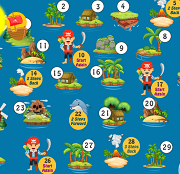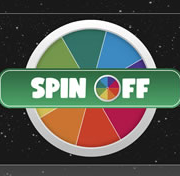Whales and their diets, Science Game
This science game will help children learn and review the whales and their diets. Begin by reading all about whales below before playing the game.
Whales and their diets
It's important to know that whales eat less than 0.4% on average. Blue whales and fins have a low feeding rate due to their reliance on blubber. Right whales and fin whales have a high proportion of blubber. They can consume anywhere from 36% to 45 percent of their body weight. Right whales eat by filtering, but they also "graze" by swimming slowly through small schools of zooplankton while their mouth is open. The large gap between its anterior baleen plates lets water flow into its mouth. This allows the zooplankton to become entangled in a finely woven baleen mat.
Humpback whales consume between 2000kg to 2500kg of food each day.
Humpback whales can be active and eat a varied diet. They typically consume two to three thousand kilograms of food each day. Humpback whales give birth to their babies in their first year. Their compressor muscles allow them to squeeze the milk from their mouths, so they don't cling as tightly to their food like humans.
Humpback whales need to eat thousands of kilograms every day in order to maintain their large body weight. Plankton and small fish are their main food sources. This large group of marine mammals is known for their breaching behavior. They hunt in small groups of at least two. To catch prey, they use bubble nets. They form a cylindrical vertical ring around the fish and then contract it in their mouths.
For about 11 months, humpback whales care for their calves. A humpback whale calves can weigh more than one ton during this period. The humpback whale calf can live with its mother for up to a year, and it can eat her fatty milk for up to five months. The average size of a young humpback whale is eight to nine meters. They are close to their mothers during their first year and touch their calves often with their flippers.
In the ocean, Humpback whales make circles of about 10 feet in size. They take in large quantities of water and can swallow snorkeling people. Sharks may even eat lone whales in rare instances. Attacks on individual sharks are rare, however. They are still the biggest threat to humpbacks whales and can be killed by humans.
Baleen whales filter feed
Baleen whales are also known as whalebones. They are carnivorous marine mammals and use their baleen plates made of keratin to filter out planktonic organisms in the water they drink. Balaenidae and Cetotheriidae members filter plankton from their stomachs.
Baleen whales filter food by sucking large quantities of water into their mouths, and collecting plankton through their filter hairs. Each species has its own way of filtering prey. They filter their food in a different way than other whale species. Right and minke whales filter food near the surface while humpbacks dive deeper to capture their prey.
Scientists discovered that whales can filter three times as much plankton using their filtering methods than previously thought. Their ability to filter plankton may be responsible for major changes in the ocean's food webs. This is a significant change in how whales eat their food but it doesn't mean baleen whales are less omnivorous. Their omnivorous diet has many benefits for the environment.
The gestation period of a baleen whale is between ten to fourteen months. The pregnant female's food intake increases by 50-60 percent during this period. This is to help her calves adapt to colder environments. Baleen whales can mate multiple times with one female. They can mate multiple times with a single female, and the males and females may compete for each other.
Baleen whales filter their feed through their upper jaws. Their teeth and gills are keratin-rich and contain the same amount of protein as fingernails and hair. Baleen whales can filter feed both continuously and intermittently. The right whale is the most prolific of all the species that filter their food. It uses its comb-like structures for hunting prey. Bowhead whales are able to filter water and pounce on prey, while also taking large gulps.
Rorqual whales swallow large amounts of prey
Its most distinctive feature is its long-snouted skull, which makes it an exceptional example of a multifaceted animal. The mandibles of the rorqual whale can be opened almost to 90 degrees by its giant pads attached to the skull's base. The rorqual's neck and head are streamlined, which allows it to swim efficiently and steadily without having to compromise its ability to breath.
The name rorqual whales comes from the French word "rorqual", which is in turn derived from the Norwegian word "royrkval". Royr, which is Norwegian for "whale", and royr "red" are both words. Rorquals belong to the Balaenopteridae family, which is blue whale.
Researchers believe that rorquals evolved an organ that can suck large amounts of prey. The large size of these whales may be due to this unnamed organ, which could have been developed early in the evolution history of the species. Nature published the findings of the researchers. Robert E. Shadwick (Canada research chair in integrative animals physiology), A. Wayne Vogl (Doctoral), and Jeremy A. Goldbogen (Postdoctoral researcher at Cascadia Collective in Olympia) were part of the team that conducted the study.
Rorqual whales eat large amounts of water and small prey floating on the ocean's surface. These animals could choke or drown if their mouths were not protected by the flap. To prevent water from reaching their pharynx or moving down their esophagus, Rorquals filter the water from their food prior to swallowing.
Blue whales consume milk in their first 12 months of existence
Blue whales give birth to one calves every two to three year. The calves are with their mother for six to 7 months. Blue whale calves reach an average length of 52 feet and a weight increase of two-thirds after six months. Blue whale calves eat only their mothers' milk for the first 12 months. They don't eat krill. Blue whales can consume between 22 and 90 kilograms of milk daily during this period.
The blue whale is large, sleek and slim with a long body. When threatened or startled, they can travel speeds up to 25 mph. Blue whale calves consume up to 100 gallons daily of milk during their first 12 months. A baby blue whale can eat up to 100 gallons of milk per day. This is approximately the same weight as an adult human. Blue whales begin to eat krill after the first 12 months.
Blue whale mothers have two lactating systems. The mother blue whale can produce 50 gallons of milk per day. About 35 to 50% of that milk is available for growth. During this period, baby whales can gain as much as 10 pounds an hour. They wean from their mother's milk after they turn eight months old. Blue whale milk has high fat content but is good for the calf.
Due to their worldwide distribution, the population of blue whales has declined significantly over the years. There were more than 200 000 individuals in the wild before commercial whaling was introduced. Their population fell by as much as 99 percent due to the hunting for whale oil. Between 1904 and 1967, over three hundred thousand died in the Southern Hemisphere. In 1966, the International Whaling Commission protected the blue whale.
Gray whales will eat anything that's available
Gray whales are bottom feeders like other whales. They eat small crustaceans, amphipods and other bottom-feeding organisms in lakes and oceans' bottom sediments. They also eat plankton while they feed. Gray whales can switch between planktonic and benthic feeding while migrating. Gray whales will eat planktonically by rolling onto their right sides and skimming the surface while their mouths are open. Throughout their migration, they switch between the two feeding methods.
Gray whale numbers have increased due to the abundance of food resources in past. They can be found in northern Puget Sound, Washington for several months between March and April. Scientists now understand why these whales spend months in Puget Sound. New research has confirmed their brilliant feeding strategy. This whale filter all that is brought up from the seafloor. This allows them to avoid parasites and toxins that can be found on the shore.
Gray whales are an opportunistic eater and eat sediment from the ocean floor. Their two blowholes, which lead to their lungs, allow them to filter water. In their Arctic feeding grounds, they can consume up to 2400 pounds of food per day. They eat a variety plankton, crustaceans, and herring eggs and larvae.
Gray whales can occasionally eat prey that is swimming as they move. Gray whales will use their long tongues to eat prey. Sometimes, they may eat small mammals and fish. Although they don't eat on land, their large tongues may help them catch prey. Gray whales consume anything that is available to them, even though their primary diet is protein.
Whales are some of the largest creatures on Earth and they have unique diets that vary depending on their species. Some whales are filter feeders, meaning they eat tiny plankton and small fish by filtering them out of the water. Others are hunters and will eat fish, squid, and even other marine mammals.
Learning about the different whale species and their diets can be both fascinating and educational for children. That's why this science game was created to help kids learn about these magnificent creatures in an interactive and engaging way.
Before playing the game, children can read all about whales and their diets. They can learn about the different whale species and their preferred foods, as well as interesting facts about these marine mammals. The game itself will allow them to test their knowledge by matching different whales with their diets.
By playing this game, children can deepen their understanding of whales and the role they play in the ocean's ecosystem. It's a fun and educational way for kids to learn more about these amazing creatures and their fascinating diets.











